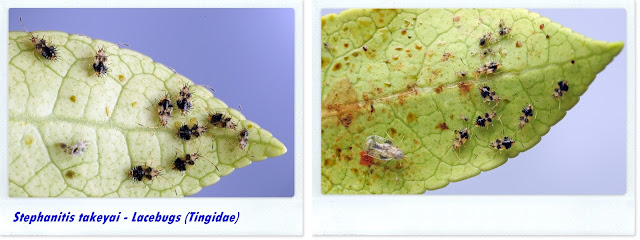Okay, let's get right into it shall we...
Hmm, I think those could benefit from this machine...
Oh hang on...GALLS!
I thought you said...
No problem though: those spiky blighters that look like conker shells are not even galls. Had to include them though, or the joke wouldn't have worked! They are actually small Cleavers (Gallium) seed pods.
No, I meant galls, as in this description I half-inched from Wiki...
Galls: (from the Latin 'gallia', oak-apple) or 'cocidia' (Greek - anything gushing out) are a kind of swelling growth on the tissues of plants, fungi, or animals. Plant galls are abnormal outgrowths of plant tissues, similar to benign tumours, or warts in animals. They can be caused by various parasites, from viruses, fungi and bacteria, to other plants and insects.
In which case, I do have a couple of nice examples to share with you. Starting with this one. I think as these were on dog rose, they will be 'Diplolepis eglanteriae/nervosa' (probably) Smooth Pea Galls...
The smooth rose pea gall is caused either by cynipid wasp Diplolepis nervosa or by Diplolepis eglanteriae on the leaves of the Dog-rose (Rosa canina). The galls are more likely to be seen than the adult wasps.
Then there is this rather spectacular looking gall: this one is aptly named the Sputnik Gall' (Diplolepsis nervosa)
The Sputnik Gall is nearly always caused by the cynipid wasp Diplolepis nervosa. It is usually found on the undersides of the leaves of the Dog-rose (Rosa canina), but occasionally on the upper surface. Once again the gall is more likely to be seen than the adult wasp.
You're joking? I'm sure I've seen it other places...
Now just in case you were wondering (I know I was) as to why both these different galls mention D. nervosa as the wasp that causes them; it's true, it is responsible for both types. But to be absolutely clear, clearer in fact than 'Cumbria Crystal', clearer than.....my future! It isn't always responsible for the Smooth Pea Gall. Got it? Great.
Then of course you have the Beech Nail Galls that look like this...
These will most likely be 'Hartigiola annulipes', The Hairy Beech Gall.
The gall falls to the ground in Autumn, leaving a circular hole in the leaf. Pupation takes place in the fallen gall and the adult midge emerges the following Spring ready to lay eggs on the new growth of leaves.
JJ says: How the bloody hell does the tiny 'midge' get back up the tree and onto the new growth I wonder.
Next up are the lovely little Silk-Button Galls 'Neuroterus numismalis'...
The Silk Button Galls are abundant on the underside of the Oak leaves and can reach 3 mm across. This gall holds the agamic (asexual; having no sexual union, able to develop without fertilization by the male; parthenogenetic) generation.
It is a single cell gall holding one wasp and can be seen from August to October, until the leaves fall in autumn. The wasp larva will mature in August but remain in the gall on the ground throughout the winter, emerging the following year from February to April.
They remind me of those pom-pom makers...
Anyhow, they are swiftly followed by the Common Spangle Gall 'Neuroterus quercusbaccarum'.
The common spangle gall wasp is a tiny wasp 'Neuropterus quercusbaccarum' that causes a growth on the underside of oak leaves in early autumn. It is common and widespread, and a single leaf can host up to 100 galls, each containing a single larva. The galls fall to the ground and can be seen around oak trees during autumn. The larvae continue to develop through the winter, and emerge as adults in April.
The bug you can see in the photo has nothing to do with the gall by the way. It is in fact tiny Barkfly nymph.
This leaf has a mixture of the two spangle galls on it...
You might recall that for a number of years now I have had these cool looking bugs in my garden? They are 'Stephanitis takeyai', Lacebugs (Tingidae). Well this year I managed to photograph some of the spikey nymphs too...
The pale, larger one in the right-hand photo is a teneral (recently moulted) adult: like this one below that I photographed in 2015...
And here's a picture I took just today of how they look once they achieve full colour. Well, I say today, it might not actually be today by the time I publish this, but ya know what I mean right?
I think it's probably approaching 'get my coat' time again, but just before I do; the insects I just shared are Lacebugs, so how about we end with a Lacehopper? Well a Lacehopper nymph at least...
 |
Cixiidae - Lacehopper nymph. Poss Tachycixius pilosusaption?
|
They seem to have no connection to lace at this stage, but the adults do have something of the look of lace about them...
 |
(Not my photo)
|




















2 comments:
Well done on not only bringing us stunning photos and education on galls - but squeezing in so many innuendos too! ��
Thanks for your visit and appreciations. Always good to know folks are reading my little blog.
Post a Comment